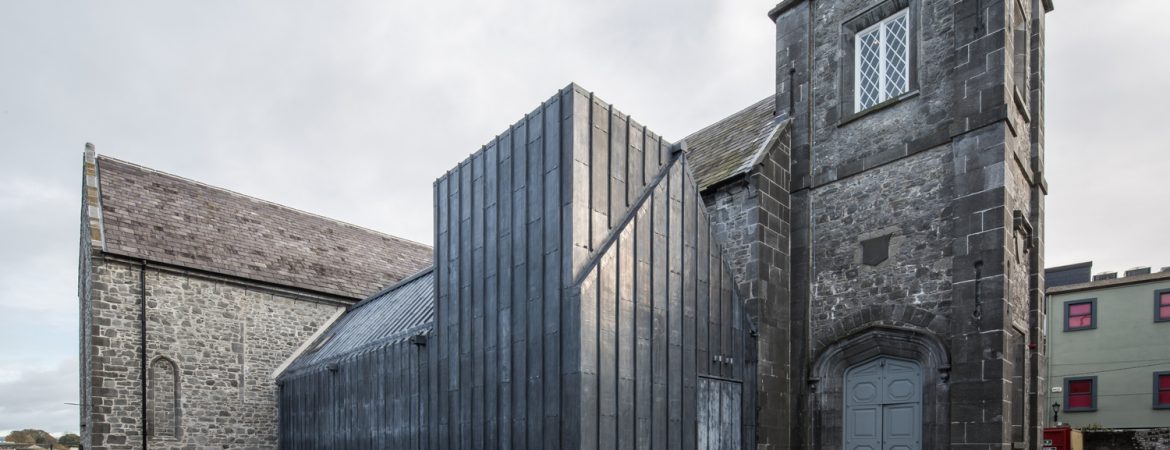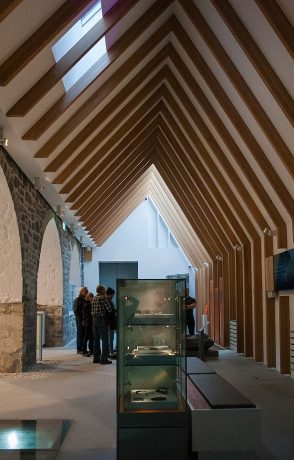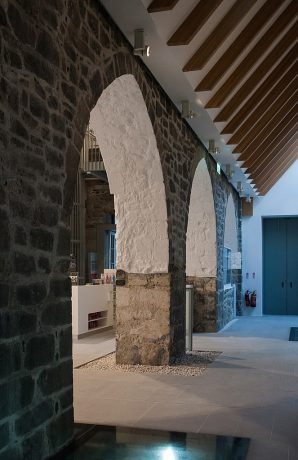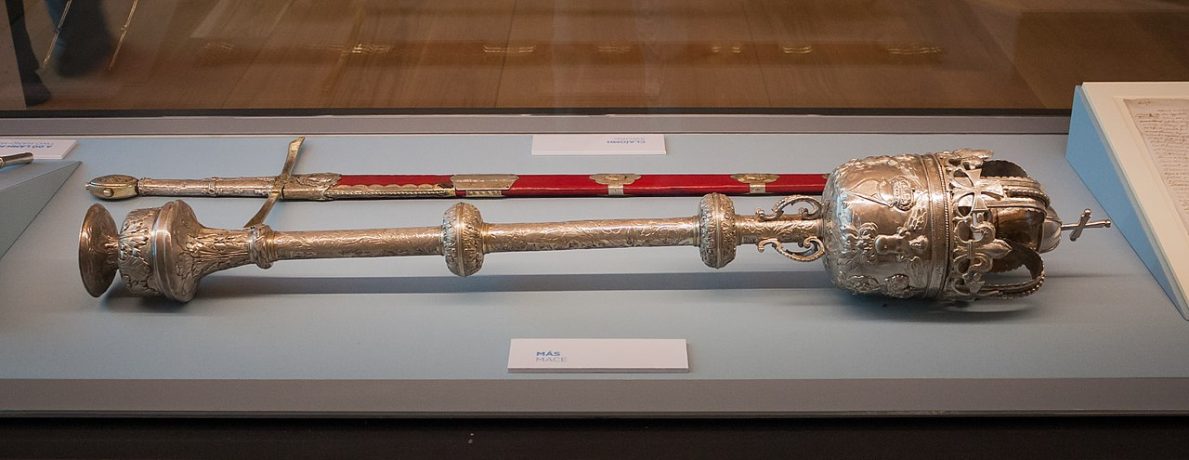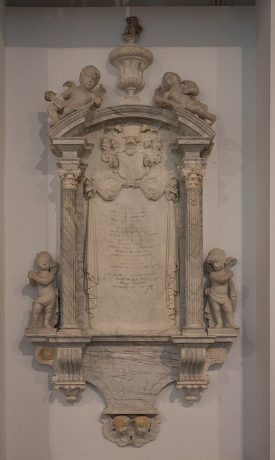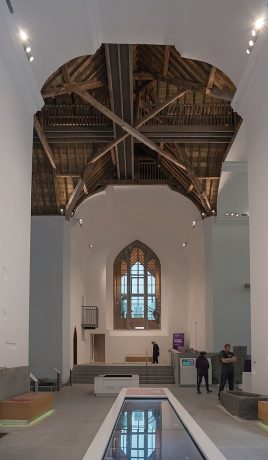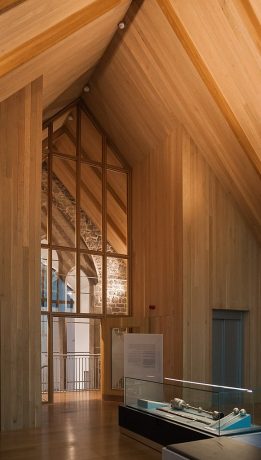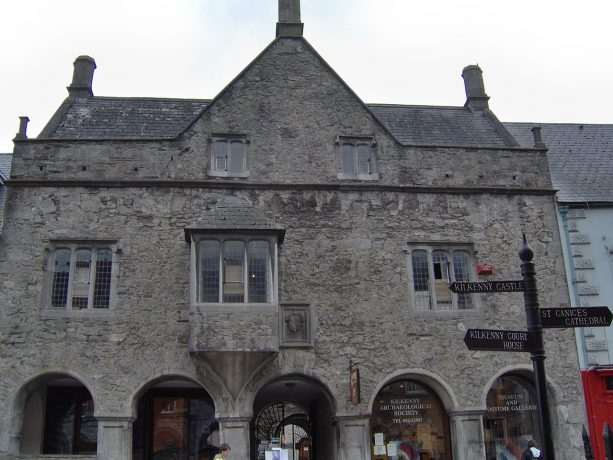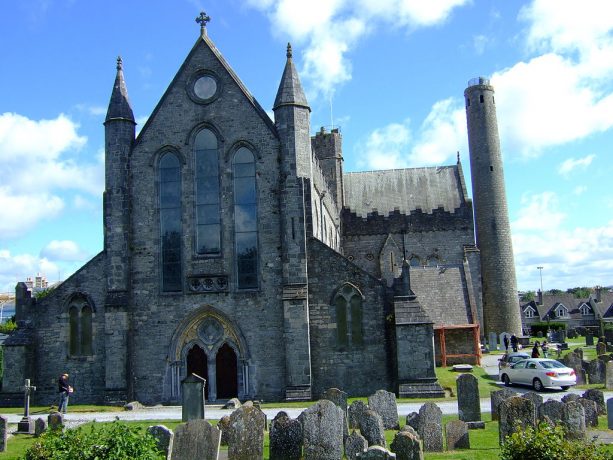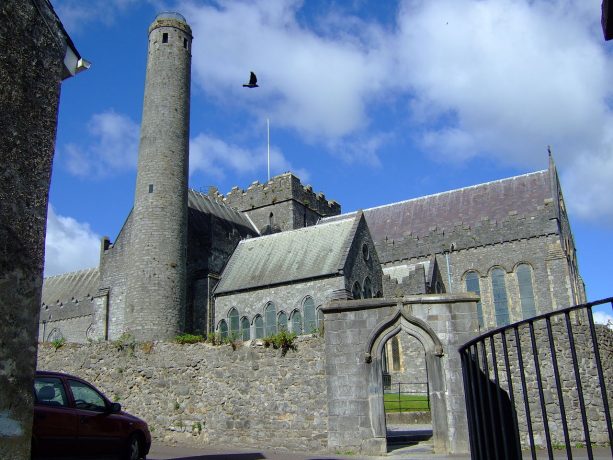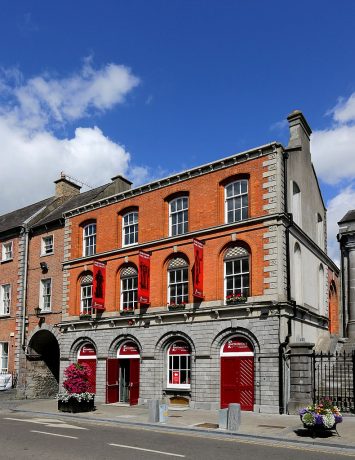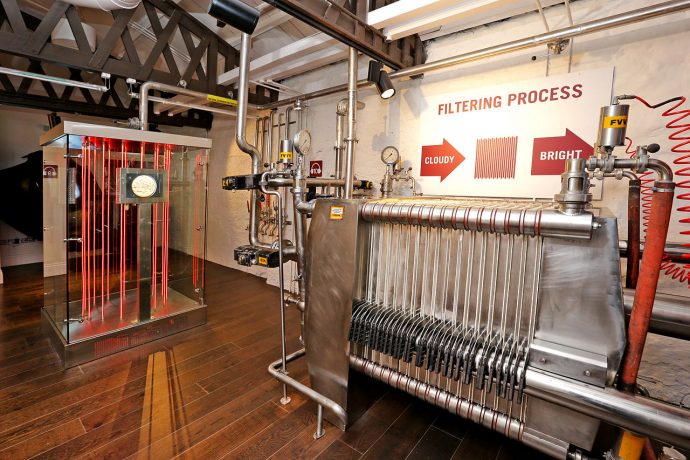Kilkenny, Ireland, is home to several historic sites located on what is known as the “Medieval Mile.” Of these, some of the most famous include Kilkenny Castle, Rothe House, St. Canice’s Cathedral & Round Tower, Smithwick’s Experience and the Medieval Mile Museum. Located inside the former St. Mary’s Church (built in the 13th century), the Medieval Mile Museum interprets medieval Kilkenny through a modern lens.
The Medieval Mile Museum opened approximately a year ago in February 2017. One of the most noticeable features of this new museum is its architecture. The former medieval church building underwent a massive renovation in order to become the Medieval Mile Museum. This resulted in the combination of an old medieval-style architectural exterior and a modern 21st-century style museum interior. For example, the outside of the building still looks like a medieval church and is surrounded by a cemetery and sculptures carved hundreds of years ago, but the inside features white walls, bright lights and interactive technology.
While touring the museum, visitors can see several different medieval artifacts on display including stone sculptures of figures and crosses, a symbolic sword and mace, carved reliefs and historical records. Despite the historical artifacts and building, the Medieval Mile Museum seems quite modern and exciting thanks to several touchscreens that display facts and interpretive information about the museum and its collection. As odd as it might sound to have brightly-lit touchscreens next to medieval objects, the two actually blend together quite well. The Medieval Mile Museum was designed in such a way that the large cases holding the touchscreens match the walls and floor. Because of this, the 21st century tech does not look out of place, but rather disappears into the surrounding interior. The museum’s use of technology is sure to appeal to younger visitors who have grown up in the fast-paced Digital Age of smartphones, tablets and instant information.
One particularly interesting section of the museum is Rothe Chapel. The name “Rothe” comes from one of the most noted families in Kilkenny’s political history. Seeing Rothe Chapel and learning about its history helps visitors connect with a specific Kilkenny family, as opposed to only learning the broader medieval narrative. After seeing the chapel, if you are interested in learning more about this Renaissance-era merchant family, then consider visiting the nearby Rothe House & Garden – also located on the Medieval Mile – built between the late 16th and early 17th century. While Medieval Mile Museum tickets do not cover entry to Rothe House, you can buy a Medieval Mile Pass from Kilkenny Tourism which covers the Medieval Mile Museum, Rothe House and a few other surrounding sites. If you are looking for the full historical experience, then the pass is a great bargain!
If you want to see a bit more of medieval Kilkenny, then your next stop should be St. Canice’s Cathedral & Round Tower, which is also covered by the Medieval Mile Pass. This historic church presents a different experience than the one now inhabited by the Medieval Mile Museum. The reason for this is that the former St. Mary’s has been converted into a museum, but St. Canice’s remains active. St. Canice’s Cathedral, a member of the Church of Ireland (the Irish branch of the Church of England), still holds services inside the approximately 800-year-old building; the chuch also features the climbable Round Tower – perfect for seeing the surrounding landscape. St. Canice’s Cathedral welcomes visitors and tourists and lets you see another version of medieval Irish architecture.
Another site to see on the Medieval Mile is the popular Kilkenny Castle. This medieval castle was constructed by the Normans after their invasion of Ireland; the castle was constructed between the late 12th century and early 13th century. Today, the renovated and restored Kilkenny Castle is not only a historical landmark representing the city’s past, but also a popular tourist site with elegant rooms serving a variety of uses. Although it is a medieval castle, much of its interior is decorated in a 19th century style, such as its art gallery and boardrooms. There are still some medieval-style rooms, although they include modern amenities such as electric lights, but the inside of the castle is presumably quite different looking than what you might expect.
Finally, the last major stop covered by the Medieval Mile Pass is Smithwick’s Experience. The Medieval Mile Museum and Smithwick’s Experience are usually listed as the most popular attractions in Kilkenny. In 2013, Kilkenny’s Smithwick’s brewery stopped production of the famous ale and moved to Dublin alongside Guinness (which has owned Smithwick’s since the 1960s). However, the historic brewery building did not close completely. In 2014, Smithwick’s Experience opened as a mix between a museum and a brewery tour. At the end of the tour, visitors are treated to a complimentary pint of the Irish red ale. There are a few other things to do that are also part of the Medieval Mile Pass, for example the Kilkenny Ghost Tour, but the other nearby historic sites are not a part of it.
If you are interested, then some of the aforementioned other Medieval Mile places to visit include a 16th century tavern called the Hole in the Wall, the mid-19th century St. Mary’s Cathedral and a medieval Dominican monastery called Black Abbey. Overall, the Medieval Mile features a variety of different historical sites ranging from churches to historic houses – although not all of them are technically “medieval.”
After touring Kilkenny’s Medieval Mile and learning all about its history, you will inevitably come back to the Irish city’s present. With many local shops and restaurants to visit, it is interesting to see how Kilkenny has developed over the centuries. The city does an excellent job of not only preserving its history and culture, but also promoting it to bring in visitors from around the world. Because of this, make sure to add Kilkenny to your trip itinerary next time you visit Ireland!
